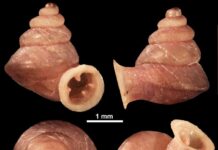AT the time of writing this, the sounds of Chinese New Year (CNY) or the Spring Festival (and even so, the Lunar New Year) is ringing out loud and clear.
Shopping malls around the country are bustling with people in a shopping frenzy as Chinese New Year jingles heighten the tempo of jollity.
Of all the Asian festivals, the CNY is one celebration where fruits and flowers have a dominant place as each fruit or flower symbolises a positive trait especially in fortune and wealth.
Colourful paper pineapples, sometimes yellow and sometimes red are hung in the front of homes. Real pineapples also adorn the altars during the festival.
The pineapple (onglai in Chinese) simply means “fortune comes”.
Mandarin oranges are everywhere and a must-have at every CNY open house and Chinese homes.
They represent gold in Chinese tradition and being round in shape they resemble money.
Some of fruits are also preferred for the “positive sounds” they bring when spoken. For an example The Chinese word for apple is “ping” which means harmony.
Truly ‘tis the season to be tutti-fruitti with an abundance of fruits – pomelos, grapes, peaches, pumpkins, plums, and all, sought after because they symbolise wealth, prosperity, family unity, abundance, good luck and happiness.
While fruit wholesalers and retailers import fruits of high quality during this festival to meet the seasonal demand – my thoughts hover on the large expanse of local fruits.
I am a great fan of local fruits. My favourite being jackfruit, which I can eat for an entire meal.
The king of fruits is truly “duriacious” but that does not overshadow the other great fruits we have – mangosteens, dragon fruits, mangoes, papayas, pineapples, cikus, langsats, dukus, cempedaks, pulasans, rambutans and many others.
We are blessed with sweet, juicy and succulent fruits and a great climate to support their cultivation. We are blessed with a very huge fruit biodiversity.
But here are the questions – why are local fruits much more expensive than imported ones? Have we perfected the variety of fruits that we have? How extensive and active are the breeding activities for most of these fruits? Do we have a vibrant seed industry for our fruits?
I cannot boldly say that our answers to the above have a positive slant.
We are indeed far away from fully leveraging the fantastic biodiversity of fruits that we are blessed with.
Thailand, for example is a shinning example of how they have developed and improved their fruit varieties and we now import from them.
Breeding is not a short-term stint. It requires decades but this can be shortened with today’s technologies like markerassisted selection and many other genetic tools.
But breeding techniques still require a clear roadmap with the right priorities outlined and funding mechanisms put in place.
In the USA and European nations there is an active participation of scientists and farmers in fruit breeding engagements.
Nurseries provide so much of choices to growers and home owners on the type of fruit trees they need, based on their land area, the height and canopy size of the trees, the rooting system that can be supported in their land and not to mention their taste buds.
In Malaysia, although there are some fruit varieties that have been developed, they are yet to be released to the market.
Another downside – we do not have a germplasm conservation library. In many cases, the germplasm conservation is lost when the scientist collating it, retires.
It seems like a long journey for us, before we see a tangible well-scripted germplasm library of our local fruits is slated and sustained for posterity.
I am waiting for the time where we take pride in our fruit diversity and they become our national icons, not just durians.
And now wishing all our Chinese readers a very happy and prosperous Year of the Dog – Xin Nian Kuai Le.
















